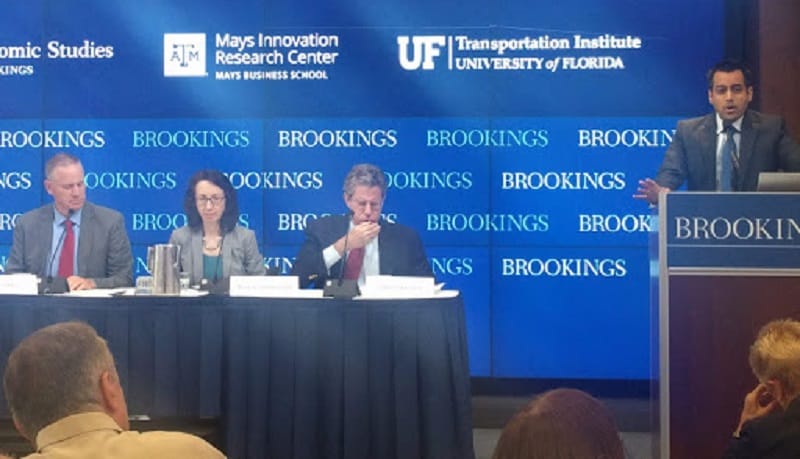Automated Vehicles May Be Further Away Than They Appear
WASHINGTON, July 25, 2019 – There is still a long way to go before self-driving vehicles can be fully integrated into society, said engineering and policy experts gathered at the Brookings Institution for a day-long conference on Thursday. In the opening keynote address, Kenneth Leonard, director of

WASHINGTON, July 25, 2019 – There is still a long way to go before self-driving vehicles can be fully integrated into society, said engineering and policy experts gathered at the Brookings Institution for a day-long conference on Thursday.
In the opening keynote address, Kenneth Leonard, director of the Transportation Department’s Intelligent Transportation Systems Joint Program Office, said that the Department of Transportation has worked to develop the promise of connected and automated vehicles to solve some of transportation’s biggest challenges.
There are about 40,000 fatalities on U.S. roads each year, he said. The U.S. close to significant changes in the vehicle industry. However, in the rush to utilize spectrum for transportation purposes, the potential vulnerability of information sharing among vehicles has been overlooked.
The Transportation Department will lead efforts to address potential safety risks, advance the lifesaving potential of automation and seek to strengthen public confidence in these emerging technologies, said Leonard.
Consumer safety and trust are crucial for Autonomous Vehicle acceptance, said Sanjay Ranka, professor of computer science and engineering at the University of Florida. That is why data-driven approaches are key as well as the use of centralized computing to manage privacy and stability.
Regarding AV regulation, Former Under Secretary of Transportation for Policy Derek Kan said that safety is the number one priority. For that reason, the federal government needs to modernize vehicle safety standards to determine how to measure the value of safety in this era.
But government action is a hurdle as the current administration does not consider AV development inevitable, he said. Although the federal government has the authority to pull defective vehicles off the road, it has no “clear” role in insurance liability, forcing states to assign liability on their own terms.
To ensure safety, we need to know what specific metrics we want AV data to report, said Kan.
Part of that problem, however, is that there doesn’t seem to be a consensus definition of “safety” within the transportation industry, said Marjory Blumenthal, senior policy researcher at the RAND Corporation. Both the public and private sectors don’t know how to efficiently test and measure safety.
The public sector knows even less information, she said, because autonomous developers do not disclose all the details of their research.
Given how competitive the automobile industry is, innovation resulting from that competition is vital, said Cliff Winston, senior fellow at Searle Freedom Trust.
Private sector competition is at the right level, but the problem is the policy stance, he said. Regulatory delays combined and constraints on technological innovations hurt automotive advances.
The public sector needs more input into this technology, said Blumenthal, because AVs are not yet consistent with their design and operation. Policymakers need to think about AV safety from a system perspective, where different factors make up the mechanics of the vehicle itself.
Winston agreed that the government needs to establish a testing framework for AVs on a national scale. In turn, developers will push for the infrastructure needed to smoothly operate the vehicles.
Policymakers should instead emphasize the cost of not having these types of vehicles, said Rick Geddes, founding director at Cornell University’s program in infrastructure policy. It would be a “huge advantage” if people started to think differently about how they pay for and use roads.
The “status-quo bias” towards traditional vehicles, said Winston, deters the government from authorizing manufacturing and fully autonomous driving.
The technology is not changing as fast as people like to think, said Blumenthal. Projections for AV deployment are further than anticipated due to setbacks from accidents. She said that these accidents provide a poor outlook on the industry as a whole.
(Photo of Brookings Institution event by Masha Abarinova.)










Member discussion